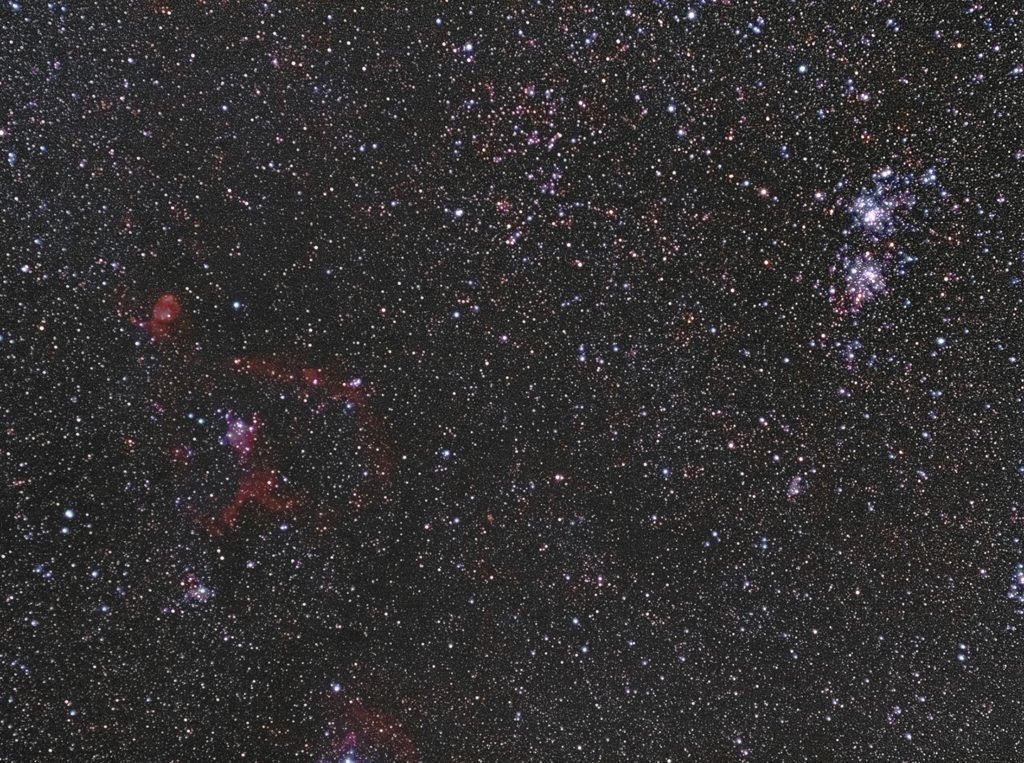Exploring the night sky through astrophotography is a journey that demands the best tools, and Nikon lenses for astrophotography are among the top choices for enthusiasts and professionals alike. Capturing the faint glow of distant stars and galaxies requires lenses that can handle low light and offer sharp, wide views.
Our guide highlights the nine best Nikon lenses, both Nikon Z Lenses and Nikon F lenses, ensuring you have the perfect gear to capture the glory of the Milky Way.
Our top picks include the Nikon Z 14-24mm f/2.8 S for its wide aperture and flexibility in framing vast star fields and the Nikon AF-S 14-24mm f/2.8G ED for its edge-to-edge sharpness crucial in astrophotography. Each lens brings something unique to the table, from light intake to compositional versatility.
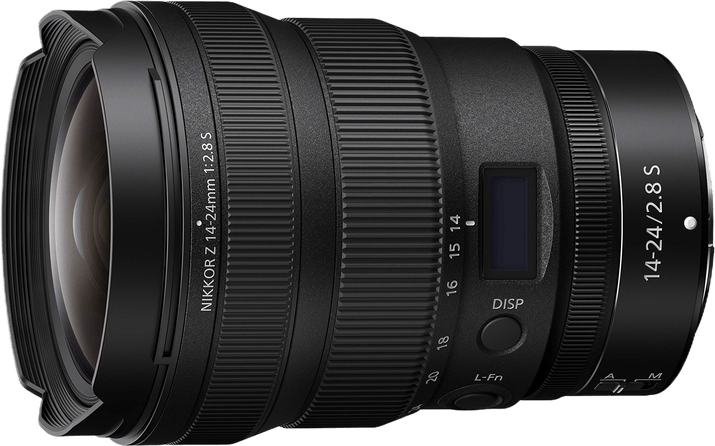
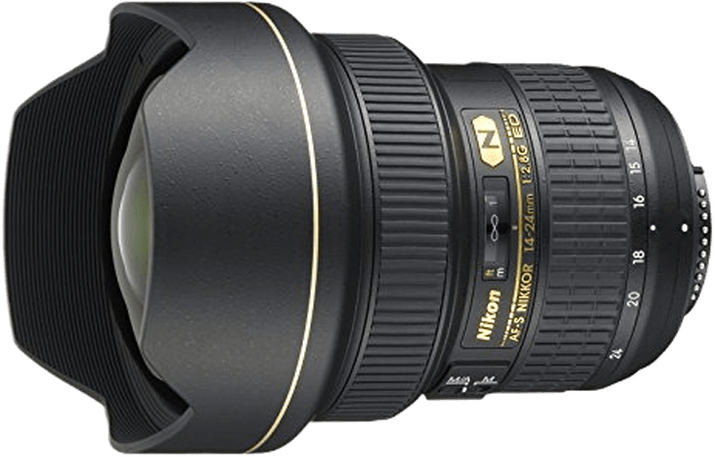
What Is the Best Nikon Z Lens for Astrophotography?
To find the best Nikon Z lens for astrophotography, you need to consider aperture size, focal length, and optical quality. The Nikon Z 14-24mm f/2.8 S leads our list, offering a versatile range and excellent light capture. But each lens here excels in low light, which is crucial for capturing the night sky’s intricate details.

- Ultra-wide to wide zoom versatility
- Constant f/2.8 aperture for low-light excellence
- Robust, weather-sealed construction
- Exceptional sharpness and minimal distortion
- Quick, accurate autofocus system
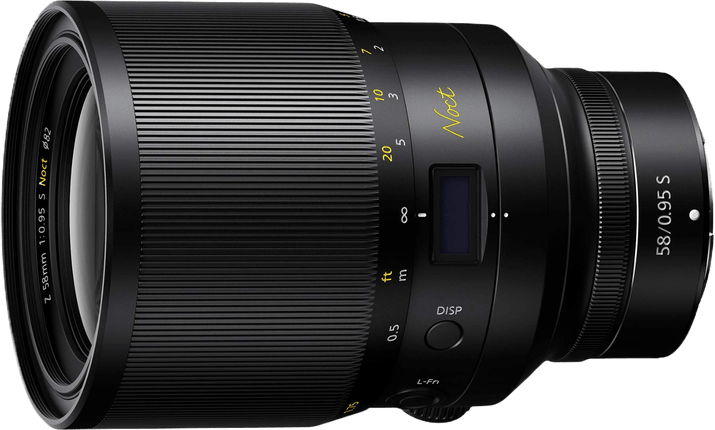
- Unmatched f/0.95 aperture for low-light mastery
- Exquisite bokeh for standout subject isolation
- Manual focus precision for creative control
- Robust, weather-sealed build for durability
- Exceptional sharpness and color fidelity

- Wide f/1.8 aperture for stellar low-light shots
- Compact, lightweight design for easy travel
- Sharp, edge-to-edge clarity in images
- Fast, silent autofocus perfect for video
- Weather-sealed for reliable outdoor use

- F/1.2 aperture for unparalleled low-light performance
- Precise manual focus with smooth control ring
- Exceptional image sharpness and clarity
- Durable, weather-sealed construction for reliability
- Beautiful bokeh for creative depth of field
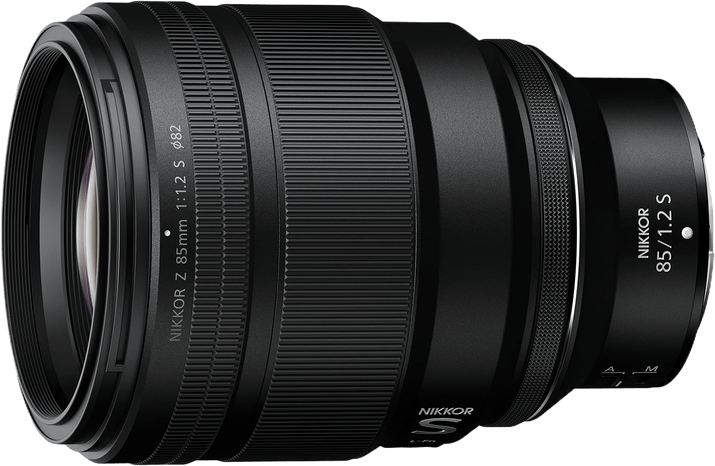
- F/1.2 aperture for exceptional low-light capability
- Ideal for portrait with flattering compression
- Superior optical design ensures edge-to-edge sharpness
- Robust build with comprehensive weather sealing
- Smooth, pleasing bokeh enhances subject isolation
Our Favorite Nikon Z Lenses for Astrophotography
Let’s dive into our favorite Nikon Z lenses for astrophotography. From wide angles to remarkable low-light performance, we explore options that cater to every astrophotographer’s needs. Discover the perfect lens to enhance your Milky Way photography.
1. Nikon Z 14-24mm f/2.8 S

| Brand |
Brand
Nikon
|
| Lens Weight |
Lens Weight
650 g
|
| Maximum Aperture |
Maximum Aperture
f/ 2.8
|
| Focal Length Range |
Focal Length Range
14-24 mm
|
| Image Stabilization |
Image Stabilization
|
The Nikon Z 14-24mm f/2.8 S is the best lens for astrophotography if you have a Nikon mirrorless camera. The wide-angle zoom range offers flexibility in framing, giving you more composition options than a prime lens.
Its wide f/2.8 aperture gives you excellent light transmission, which is key for capturing the faint details of the night sky.
Optically, this lens includes elements that minimize distortion and chromatic aberration. These features ensure stars appear as sharp points across the frame, with minimal color fringing. The lens’s construction also includes coatings that reduce flare and ghosting, preserving contrast and detail in night sky photography.
However, some edge softness and vignetting can occur at the widest focal length. You can fix this with photo editing software, but we recommend you avoid the 14mm focal length.
Its light weight makes it manageable for long nights of shooting, especially if you’re trekking to areas with low light pollution.
Compared to the Nikon Z 58mm f/0.95 S Noct, the Z 14-24mm f/2.8 S offers a wider field of view and is significantly lighter, making it more versatile for capturing expansive night skies. While the Noct has a faster aperture, its focal length and weight make it less practical for wide-field astrophotography.
The Nikon Z 14-24mm f/2.8 S perfectly combines a wide aperture, wide-angle focal length, and exceptional optical quality. That’s why it’s our top pick as the best Nikon lens for astrophotography.
2. Nikon Z 58mm f/0.95 S Noct

| Brand |
Brand
Nikon
|
| Lens Weight |
Lens Weight
2000 g
|
| Maximum Aperture |
Maximum Aperture
f/ 1.0
|
| Focal Length Range |
Focal Length Range
58 mm
|
| Image Stabilization |
Image Stabilization
|
The Nikon Z 58mm f/0.95 S Noct is a fabulous Nikon lens specially designed for night photography. That’s why it has to be a top consideration for astrophotographers.
The ultra-fast f/0.95 aperture is key to its incredible low-light performance, allowing a massive amount of light to hit the camera’s sensor.
Its fixed focal length means photographers must move to compose their shots, but the quality of images, especially in low light, is unmatched. The lens’s ability to reduce chromatic aberration and distortion helps in capturing sharp, clear images of celestial bodies.
Weighing 4.4 lbs (1.9 kg), this lens is on the heavy side. That won’t be too much of a problem when using an astrophotography tripod. But it’s something to bear in mind when hiking to a clear shooting location.
However, its optical performance, including edge-to-edge sharpness and minimal distortion, makes it a powerful tool for astrophotography. The manual focus allows for precise adjustments, ensuring stars and planets are captured with crisp detail.
The Nikon Z 58mm f/0.95 S Noct‘s unparalleled aperture and image quality make it a valuable lens for astrophotographers looking for the best low-light performance. It is pricey but it’s also a worthy investment if you want the best night sky images.
3. Nikon Z 20mm f/1.8 S

| Brand |
Brand
Nikon
|
| Lens Weight |
Lens Weight
505 g
|
| Maximum Aperture |
Maximum Aperture
f/ 1.8
|
| Focal Length Range |
Focal Length Range
20 mm
|
| Image Stabilization |
Image Stabilization
|
The Nikon Z 20mm f/1.8 S is the best prime lens for astrophotography on a Nikon mirrorless camera.
Its fast f/1.8 aperture allows a significant amount of light to reach the sensor, helping you shoot with slower shutter speeds. This ensures stars are captured crisply.
The 20mm focal length is perfect for wide-field astrophotography, offering expansive views of the Milky Way or star fields without noticeable distortion. This lens is particularly good at controlling chromatic aberration, ensuring stars appear as sharp points of light across the frame.
The lens’s construction includes elements that minimize flare and ghosting, preserving the quality of light from distant stars. Its sharpness, even at wide apertures, makes it a reliable choice for capturing the intricate details of the night sky.
Weighing just 1.1 lbs (505 g), it’s relatively light and easy to handle during long nights of shooting.
The lack of image stabilization is less of a drawback for astrophotography, where cameras are typically mounted on tripods for long exposures.
The Nikon Z 20mm f/1.8 S has a wide aperture, a wide field of view, and excellent optical quality. It has everything you need to succeed when shooting the night sky.
4. Nikon Z 50mm f/1.2 S

| Brand |
Brand
Nikon
|
| Lens Weight |
Lens Weight
1090 g
|
| Maximum Aperture |
Maximum Aperture
f/ 1.2
|
| Focal Length Range |
Focal Length Range
50 mm
|
| Image Stabilization |
Image Stabilization
|
The Nikon Z 50mm f/1.2 S is a prime lens that stands out for astrophotography thanks to its f/1.2 aperture. This wide aperture is crucial for capturing the faint details of the night sky, allowing more light to hit the sensor and making it easier to photograph stars and galaxies in low-light conditions.
The fixed 50mm focal length is versatile, suitable for a wide range of subjects, from expansive nightscapes to detailed shots of the moon.
It offers exceptional sharpness and minimal chromatic aberration, ensuring that stars appear as crisp points of light against the black backdrop of the night sky.
This lens is a little on the heavy side, but its optical performance justifies the extra weight. The lack of image stabilization is not a concern for astrophotography, especially when you have such a wide aperture.
The Nikon Z 50mm f/1.2 S is a top choice for astrophotographers seeking high-quality images. Its ability to handle low light and its edge-to-edge sharpness make it a powerful tool for capturing the beauty of the night sky.
5. Nikon Z 85mm f/1.2 S

| Brand |
Brand
Nikon
|
| Lens Weight |
Lens Weight
1160 g
|
| Maximum Aperture |
Maximum Aperture
f/ 1.2
|
| Focal Length Range |
Focal Length Range
85 mm
|
| Image Stabilization |
Image Stabilization
|
The Nikon Z 85mm f/1.2 S is another sensational prime lens with exceptional low-light capabilities. The 85mm focal length isn’t typical for wide-field astrophotography, giving you a tighter composition. But the optical quality and fast aperture allow you to create stunning night sky images.
The super-fast f/1.2 maximum aperture is a key feature for capturing the faint details of celestial objects in low-light conditions.
Its optical performance with edge-to-edge sharpness and minimal distortion makes it a valuable tool for astrophotographers looking to capture detailed shots of specific astronomical features. The lens’s ability to minimize chromatic aberration ensures that stars and other celestial bodies are rendered with crisp clarity and true colors.
The Nikon Z 85mm f/1.2 S is another brilliant prime lens for astrophotographers. Its superior optical quality and the ability to handle low light make it a powerful tool for capturing the beauty of the Milky Way.
What is the Best Nikon F Lens for Astrophotography?
This section looks at the best Nikon F lenses for astrophotography. Selected for their ability to capture the faintest light with wide apertures and sharp imagery, these lenses excel in framing the night sky’s vastness and detail.
The lineup includes versatile zooms and primes, each chosen for specific strengths in low light and clarity. We have a great selection of astrophotography lenses for your Nikon DSLR camera.

- Ultra-wide angles for expansive astrophotography scenes
- Constant f/2.8 aperture for low light excellence
- Exceptional sharpness across zoom range
- Durable, weather-sealed construction for rugged use
- Quick, accurate autofocus with manual override option
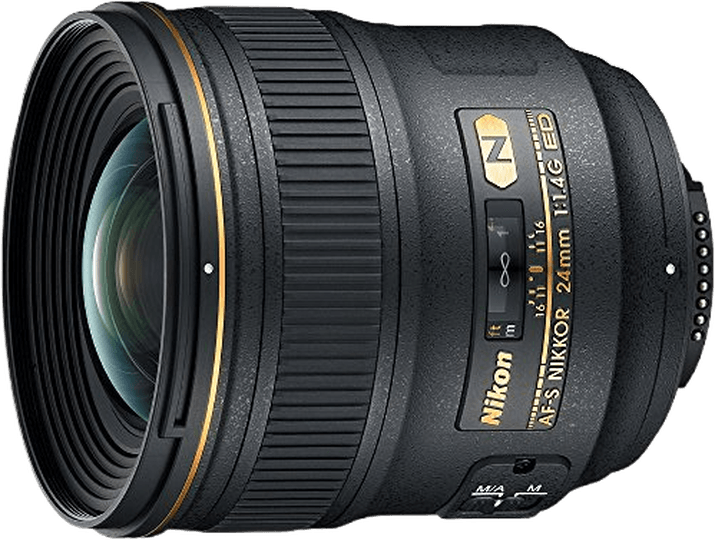
- Large f/1.4 aperture for stunning night skies
- Superior sharpness for detailed celestial captures
- Robust, weather-sealed design for outdoor durability
- Minimal chromatic aberration enhances star clarity
- Quick, silent autofocus for precise night shots

- Ideal for portrait photography with flattering compression
- Large f/1.4 aperture for beautiful bokeh
- Superior sharpness for capturing fine details
- Durable construction with weather sealing
- Fast, accurate autofocus with manual override option

- Versatile zoom range for creative fisheye effects
- Sharp, high-contrast images across the frame
- Durable build with weather sealing for reliability
- Quick, accurate autofocus with Silent Wave Motor
- Close focusing distance for dramatic perspectives
Our Favorite Nikon F Lenses for Astrophotography
Let’s take a closer look at our favorite Nikon Z lenses for astrophotography. Whether you’re capturing the vastness of the Milky Way or zooming in on distant celestial bodies, these lenses ensure you have the right tool for any night sky scenario.
1. Nikon AF-S 14-24mm f/2.8G ED

| Brand |
Brand
Nikon
|
| Lens Weight |
Lens Weight
970 g
|
| Maximum Aperture |
Maximum Aperture
f/ 2.8
|
| Focal Length Range |
Focal Length Range
14-24 mm
|
| Image Stabilization |
Image Stabilization
|
The Nikon AF-S 14-24mm f/2.8G ED is the best astophotography lens for Nikon DSLR cameras. Its zoom range allows photographers to frame vast night skies or zoom in for a tighter composition without sacrificing light intake.
Thanks to its wide aperture of f/2.8, you get excellent light intake when working in low light. It’s also constant throughout the zoom range, so you don’t lose any stops zooming in or out.
Sharpness is another strong point of this lens, delivering edge-to-edge sharpness and ensuring stars appear as crisp points right across the frame. Extra-low Dispersion (ED) elements reduce chromatic aberration. However, it does show some barrel distortion at 14mm, so it’s best to avoid the widest focal length.
Compared to the Nikon AF-S 24mm f/1.4G ED, the 14-24mm offers more versatility with its zoom capability, though it has a slightly smaller maximum aperture. This makes the Nikon AF-S 14-24mm f/2.8 G ED a good option for those who value compositional flexibility without compromising image quality.
2. Nikon AF-S 24mm f/1.4G ED

| Brand |
Brand
Nikon
|
| Lens Weight |
Lens Weight
620 g
|
| Maximum Aperture |
Maximum Aperture
f/ 1.4
|
| Focal Length Range |
Focal Length Range
24 mm
|
| Image Stabilization |
Image Stabilization
|
The Nikon AF-S 24mm f/1.4G ED is a superb prime for Milky Way photography thanks to its wide viewing angle and f/1.4 aperture. This allows a lot of light to hit the camera’s sensor, capturing faint stars and galaxies with ease.
Its fixed 24mm focal length is perfect for wide night sky shots, offering a broad view without needing to stitch multiple images together.
Sharpness is key in astrophotography, and this lens delivers just that. Images are crisp from center to edge, which is vital when capturing the intricate details of the Milky Way. This is thanks to the ED elements that reduce aberration and distortion, giving you cleaner images.
Its lightweight design, at just over 1.3 lbs (620 g), makes it easy to handle, especially on long nights under the stars.
You don’t get the flexibility of a zoom lens. But the Nikon AF-S 24mm f/1.4G ED gives you exceptional image quality and impressive light intake. It’s the perfect prime for astrophotography on a Nikon DSLR.
3. Nikon AF-S 85mm f/1.4G

| Brand |
Brand
Nikon
|
| Lens Weight |
Lens Weight
595 g
|
| Maximum Aperture |
Maximum Aperture
f/ 1.4
|
| Focal Length Range |
Focal Length Range
85 mm
|
| Image Stabilization |
Image Stabilization
|
The Nikon AF-S 85mm f/1.4G stands out for astrophotography, primarily due to its wide f/1.4 aperture. This feature is crucial for capturing detailed shots of celestial bodies in low light.
The fixed focal length of 85mm isn’t traditional for night sky photography. But it is excellent for zooming in on specific astronomical features, offering a tighter composition than wide angle lenses.
This lens boasts exceptional sharpness, ensuring that stars and distant planets are captured with clarity. However, its longer focal length and lack of image stabilization mean that a sturdy tripod is essential to avoid blur from camera shake during long exposures.
The lens’s weight, at just over 1.3 lbs (595 g), makes it manageable for extended night photography sessions.
Its optical performance, including minimal distortion and chromatic aberration, ensures high-quality images. This makes the Nikon AF-S 85mm f/1.4G a valuable tool for astrophotography enthusiasts.
4. Nikon AF-S Fisheye 8-15mm f/3.5-4.5E ED

| Brand |
Brand
Nikon
|
| Lens Weight |
Lens Weight
485 g
|
| Maximum Aperture |
Maximum Aperture
f/ 4.5
|
| Focal Length Range |
Focal Length Range
8-15 mm
|
| Image Stabilization |
Image Stabilization
|
The Nikon AF-S Fisheye 8-15mm f/3.5-4.5E ED is a unique lens for astrophotography, offering a creative twist to capturing the night sky. It’s a fisheye lens that gives you a unique perspective of the sky above.
Its variable 8-15mm focal length allows photographers to switch between circular and full-frame fisheye effects, adding a new dimension to celestial photography.
While not the widest, the aperture range still permits enough light for night sky shots, especially when the camera’s mounted on a tripod.
This lens excels in sharpness, particularly in the center, making it capable of capturing detailed shots of the Milky Way or star trails with minimal chromatic aberration. This is thanks to its low dispersion elements.
However, its inherent fisheye distortion means stars at the edge of the frame will not appear as pinpoints but rather as curved streaks, offering a stylistic choice rather than a drawback.
The Nikon AF-S Fisheye 8-15mm f/3.5-4.5E ED won’t be for everyone. But if you’re looking for a new way to capture the night sky, this is the lens for you.
Conclusion: The Best Nikon Lenses for Astrophotography
That’s our comprehensive guide on the best Nikon lenses for astrophotography. By highlighting key features like aperture size, focal length, and optical quality, we’ve shown you all the best astro lenses Nikon has to offer.
Our top two choices are the Nikon Z 14-24mm f/2.8 S and the Nikon AF-S 14-24mm f/2.8G ED. Two wide-angle zoom lenses, they both offer fast apertures, wide viewing angles, and exceptional sharpness. But as we’ve seen, there’s a wide range of astrophotography lenses for Nikon users, whether they have a mirrorless or DSLR camera.



